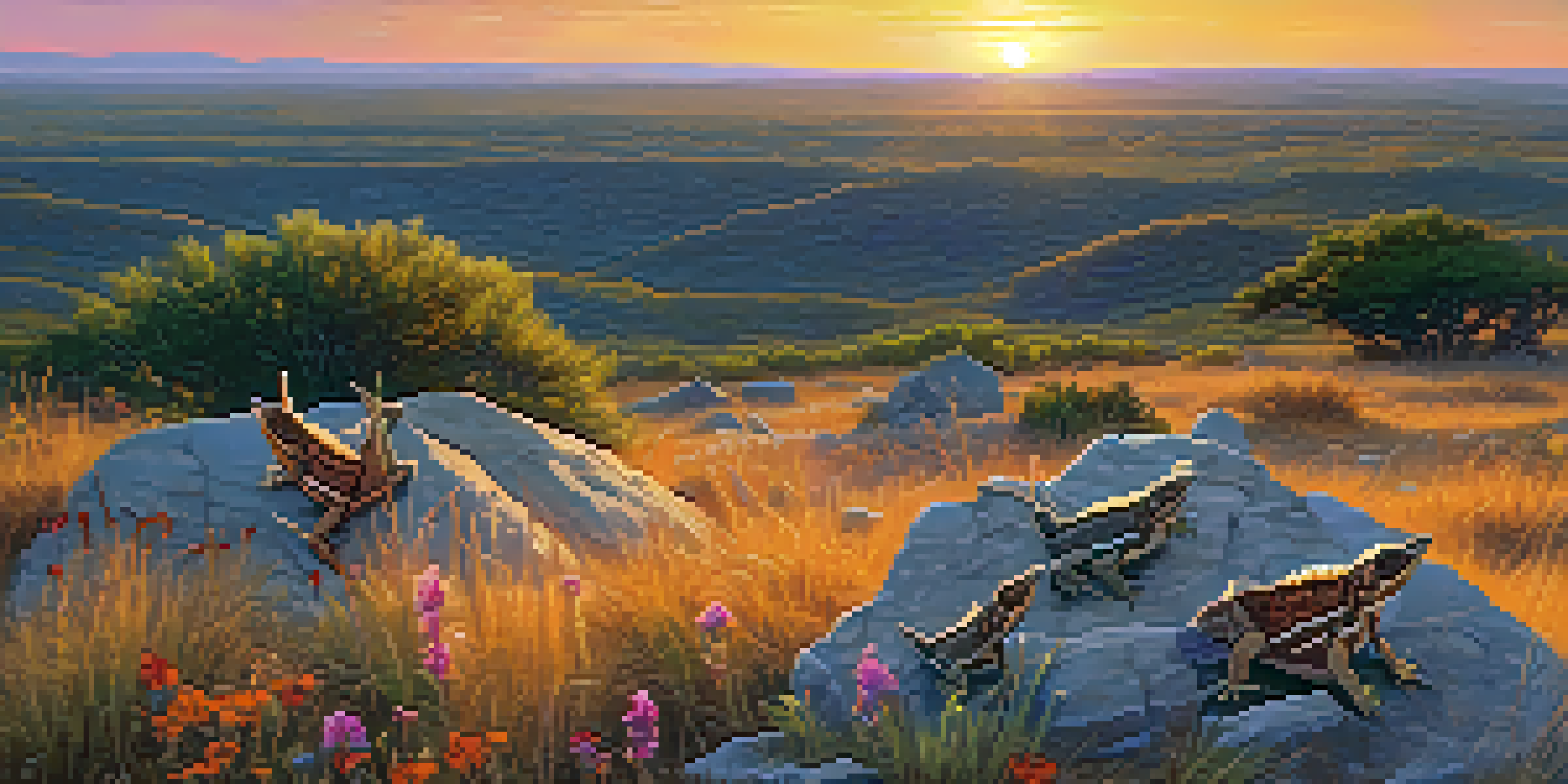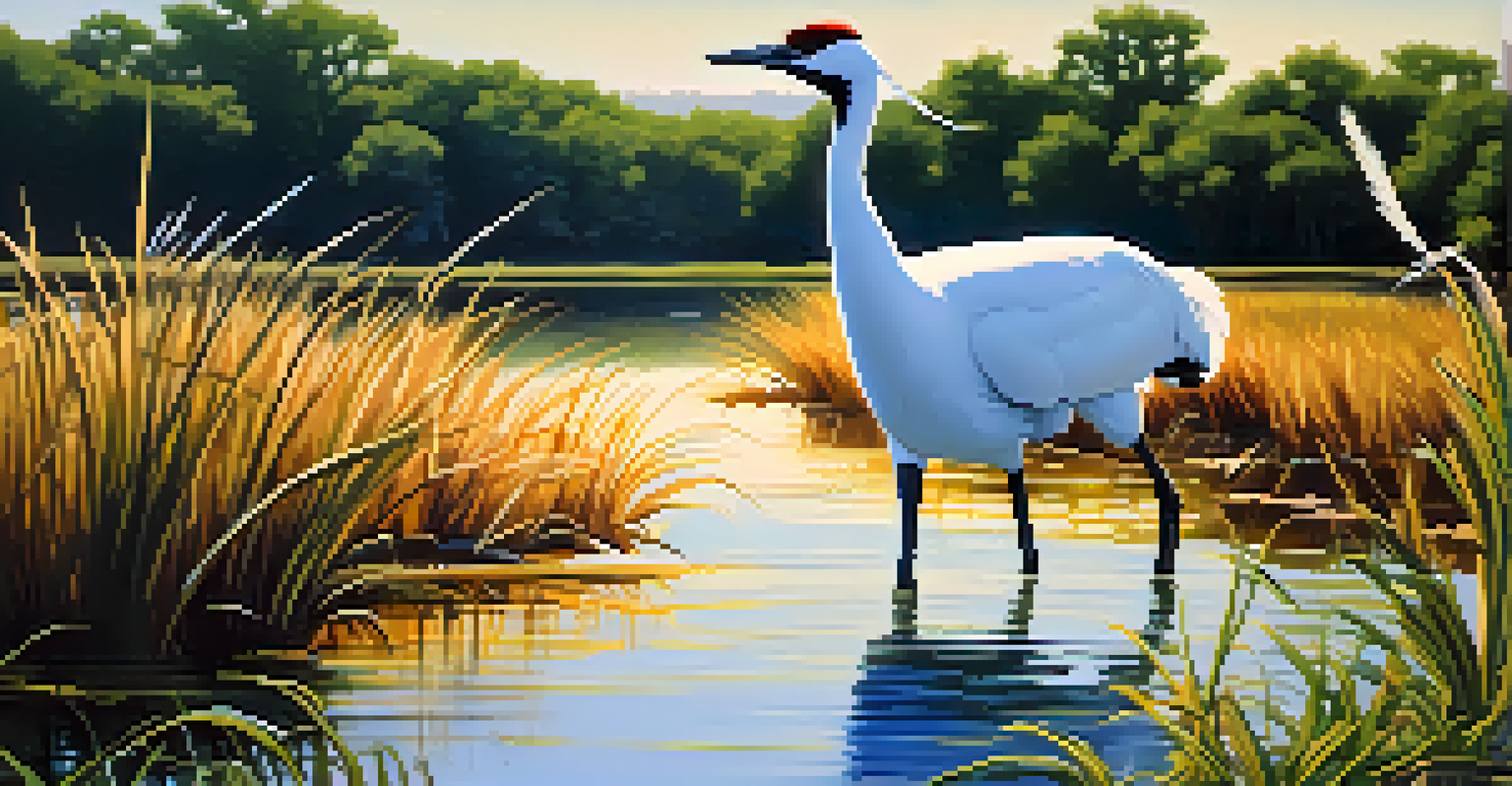The Impact of Climate Change on Texas Wildlife and Conservation

Understanding Climate Change and Its Local Effects
Climate change refers to long-term shifts in temperatures and weather patterns, primarily driven by human activities. In Texas, these changes manifest through extreme weather events, prolonged droughts, and rising temperatures. These factors not only affect the environment but also put immense pressure on local wildlife populations.
In nature's economy, the currency is not money, it is life.
For instance, the state has experienced a significant increase in the frequency and intensity of heatwaves, which can lead to habitat loss for many species. As temperatures rise, animals may struggle to find food and water, leading to decreased populations. In essence, climate change is reshaping the Texas landscape, creating challenges for its diverse ecosystems.
Understanding these local effects is critical for conservation efforts. By recognizing how climate change alters habitats, conservationists can develop targeted strategies to protect vulnerable species. Awareness of these changes equips both the public and policymakers to take necessary actions to mitigate risks.
Threats to Texas Wildlife Due to Climate Change
Climate change poses various threats to Texas wildlife, including habitat loss and altered migration patterns. For example, species like the Texas Horned Lizard, once abundant, now face declining numbers due to changing weather patterns and habitat destruction. As their habitats become less suitable, these lizards struggle to adapt.

Additionally, rising sea levels threaten coastal habitats crucial for many bird species and marine life. Areas like Galveston Bay are experiencing increased salinity and flooding, affecting the delicate balance of these ecosystems. This disruption can lead to a decline in food sources, impacting the entire food chain.
Climate Change Threatens Texas Wildlife
The impacts of climate change, such as habitat loss and altered weather patterns, pose significant threats to various wildlife species in Texas.
Moreover, species that rely on specific environmental conditions are at greater risk. With unpredictable weather patterns, animals may find it challenging to reproduce or find shelter, leading to a cascading effect on biodiversity. Protecting Texas wildlife requires urgent actions to address these climate-related threats.
The Role of Conservation Organizations in Texas
Conservation organizations play a pivotal role in addressing the impacts of climate change on Texas wildlife. These groups work tirelessly to protect habitats, educate the public, and advocate for sustainable policies. For instance, the Texas Nature Conservancy focuses on preserving critical ecosystems and promoting biodiversity.
The greatest threat to our planet is the belief that someone else will save it.
Through initiatives such as habitat restoration and species monitoring, these organizations strive to create a resilient environment for wildlife. They collaborate with scientists and local communities to develop strategies that mitigate the effects of climate change. This partnership is essential for fostering a sustainable future for Texas wildlife.
Moreover, these organizations often provide resources and support for citizens to engage in conservation efforts. By empowering local communities, they amplify their impact, ensuring that everyone contributes to the protection of Texas's rich biodiversity. Together, these efforts are crucial in combatting the challenges posed by climate change.
Successful Conservation Projects in Texas
Several successful conservation projects in Texas demonstrate the effectiveness of proactive measures against climate change. For instance, the restoration of the Blackland Prairie has helped revitalize native grasslands, benefiting various wildlife species. This project showcases how targeted efforts can lead to significant ecological improvements.
Another example is the efforts to conserve the endangered whooping crane, which includes habitat protection and monitoring programs. By focusing on their breeding grounds and migratory paths, conservationists have seen positive outcomes in population numbers. This success highlights the importance of dedicated conservation strategies.
Conservation Organizations Are Vital
Conservation organizations play a crucial role in protecting Texas wildlife through habitat restoration, public education, and collaborative efforts.
These projects not only protect wildlife but also serve as models for future initiatives. They underscore the potential for collaborative efforts between organizations, government agencies, and communities to combat the impacts of climate change. Celebrating these successes can inspire further action and commitment to conservation in Texas.
Community Involvement in Wildlife Conservation
Community involvement is crucial for the success of wildlife conservation efforts in Texas. Local residents often have the most intimate knowledge of their environment, making their participation invaluable. Engaging communities in conservation projects fosters a sense of ownership and responsibility for local wildlife.
For example, citizen science initiatives allow individuals to monitor local species and report their findings. This not only aids researchers but also educates citizens about the ecological challenges facing their region. Such involvement can create a ripple effect, encouraging others to take action and support conservation efforts.
Additionally, community-led events, such as clean-up days and habitat restoration projects, can significantly impact local ecosystems. By coming together for a common cause, communities can enhance their environment and support wildlife resilience. This collective effort is essential in the fight against climate change.
The Importance of Public Awareness and Education
Raising public awareness about climate change and its effects on wildlife is vital for inspiring action. Educating individuals about the local impact of climate change can motivate them to engage in conservation efforts. Simple changes in daily habits can lead to significant improvements in environmental health.
Schools and community organizations play a critical role in spreading this knowledge. Programs that incorporate outdoor learning and wildlife observation can instill a sense of appreciation for nature in students. By fostering a connection with the environment, future generations are more likely to advocate for conservation.
Community Engagement Enhances Conservation
Active community involvement in conservation initiatives fosters a sense of responsibility and can lead to meaningful improvements in local ecosystems.
Moreover, social media and public campaigns can amplify conservation messages, reaching wider audiences. Sharing stories about local wildlife and conservation success can inspire individuals to take part in initiatives. Increasing public awareness is a powerful tool in combating the challenges posed by climate change.
Future Challenges and Opportunities for Texas Wildlife
The future of Texas wildlife faces numerous challenges due to climate change, but it also presents unique opportunities for innovation in conservation. As habitats continue to shift, conservationists must adapt their strategies to safeguard vulnerable species. This requires ongoing research and collaboration to stay ahead of emerging threats.
One opportunity lies in the development of climate-resilient habitats that can withstand extreme weather events. By creating safe havens for wildlife, conservation efforts can mitigate the impacts of climate change. This proactive approach can ensure the survival of endangered species and promote biodiversity.

However, addressing these challenges will require concerted efforts from all stakeholders, including government agencies, organizations, and communities. By working together, Texas can pave the way for a more sustainable future for its wildlife. The journey ahead may be complex, but the collective commitment to conservation can make a significant difference.